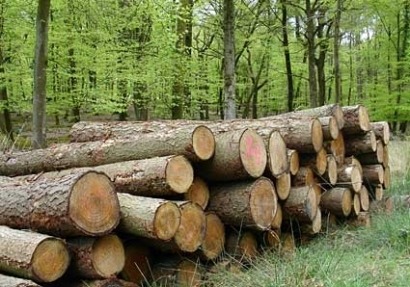
Barometer of solid biomass which has just been published by the EurObserv'ER and which refers to 2010 confirms the trend towards increased use of biomass for energy, both thermal and electric, in the European Union. Although a larger percentage rise this century occurred in 2003 when primary energy production from solid biomass grew by 9.8% compared to 2002 (from 53.2 to 58.4 Mtoe), the 8% increase in 2010 is based on a greater absolute increase, from 73.4 Mtoe in 2009 to 79.3 Mtoe in primary energy production from solid biomass.
The other two main parameters measured by the report EurObserv'ER also provide significant growth. Heat consumption increased from 60 to 66 Mtoe and electricity generated grew from 62 to 67 TWh, representing increases of 10.1% and 8.3% respectively. The European Observatory of renewable energies attributes this growth, especially those related to thermal uses, to the extremely long and cold winter of 2009-2010, which served to confirm that the operators were adequately trained to meet the increased demand in an economic crisis and faced with an uncertain future. The document confirms that the improvement in production and supply of biofuels, the greater presence of boilers and heat networks and technological innovation, have shown that biomass is able to compete and outbid gas and coal.
Germany ranks highest
By country, Germany is at the top of the podium of biomass in the EU. It ranks first in production of primary energy, with 12.2 Mtoe (over 15% of the total 27) and electricity production, with 10.7 TWh (also more than 15% of all EU countries ), comes fifth in heat production with 0.4 Mtoe, and is second in heat consumption, 8.6 Mtoe. Finland and France share second position, ahead of Sweden, Denmark and Poland. Finally, Spain holds the fifth position in 2009 in primary energy consumption, sixth in heat consumption, shows an increase in electricity production, although is still very far, with just 2.4 TWh, from Germany, Finland (9.4 TWh) and Sweden (9.3 TWh).
One of the disadvantages of Spain with regard to these and other countries is the lack of development in the combined sector which is highlighted in the present EurObserv'ER study and which states that the use of wood pellets in coal-fired systems is very common in Denmark, UK, Netherlands and Belgium. Despite the increase in production in Europe, the report notes that much of this raw material comes from the U.S., Canada and Russia. However, it also states that pellets continue to make up a small part of solid biofuels, as almost two-thirds come from forestry and logging operations, direct or residual, and to a lesser extent black liquor and agricultural waste.
In conclusion, EurObserv'ER expects that the price stability of biofuels compared to the continuous price increase in fossil fuels, the obligation to reduce emissions of greenhouse gases, the greater strength of bioenergy projects and increased the confidence of governments and businesses will encourage an increase in the use of biomass in its different facets in the coming years.
For additional information:
www.eurobserv-er.org

